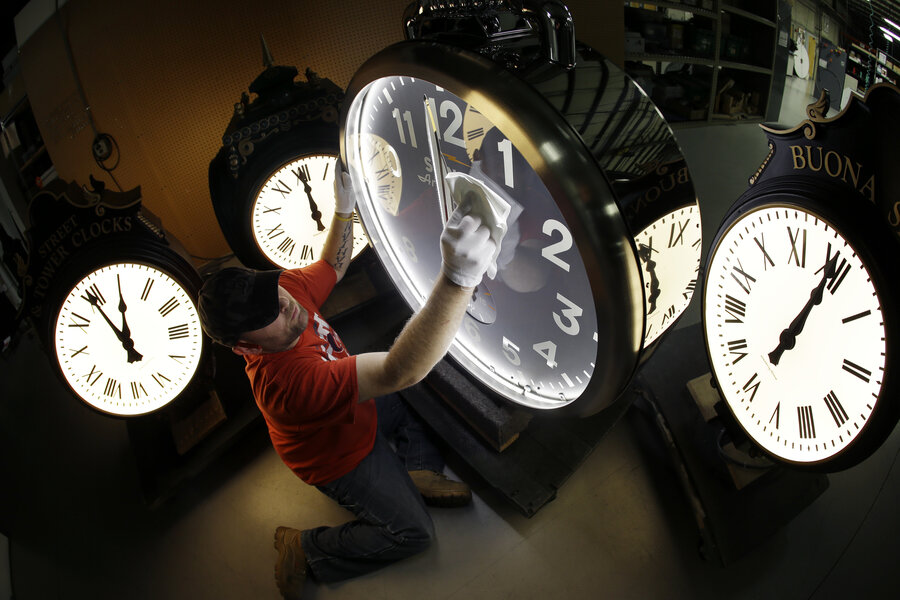Why daylight saving means more light and more spending
Loading...
Clocks will spring forward on March 12 when daylight saving time begins.
The tradition preserves evening daylight during the summer by pushing up the clock one hour. It starts in March and ends in November.
But other than losing an hour of sleep this weekend, daylight saving may have another noticeable effect on your life: making you spend more.
Daylight spending time?
A 2016 study by JPMorgan Chase & Co. Institute compared the onset of daylight saving time in Los Angeles, a city that observes it, to Phoenix, one that does not.
The finding? Relative to Phoenix, Los Angeles daily credit and debit card spending per capita rose at the beginning of daylight saving (when the extra hour of daylight was introduced) and dropped at the end of daylight saving (when the extra hour of daylight ended).
Overall, the report concluded that autumn spending reductions outweighed elevated spring spending. But the fact remains: When presented with an extra hour of light, you may be tempted to spend more.
Look on the bright side
“Most of us are surprised about the link between sunlight and how much we’re willing to spend,” says Kyle B. Murray, a marketing professor at the Alberta School of Business in Canada. He’s one of the researchers behind “The Effect of Weather on Consumer Spending,” a study that examined the impact of various weather conditions on consumer behavior.
The study concluded that sunshine can reduce negative feelings like frustration and anger, which, in turn, can lead to a willingness to make more purchases.
“When there was more sunlight during the day, people were willing to spend more money, and they were more willing to buy more than they would other times,” Murray says. “Essentially what we found drove that effect was sunlight made people feel better. It improved their moods.”
There’s a mechanical aspect at play, too, says Michael Downing, the author of “Spring Forward: The Annual Madness of Daylight Saving Time.” Daylight saving time signals that warmer weather and longer days are near.
“Most Americans have no idea when spring actually begins, but the action of turning your clocks forward makes you believe spring has begun and summer is on the way,” he says.
Stand up to the sunshine
Where does that leave you? If you think you could be vulnerable to fair-weather spending, here are a few ways to make sure the sunlight doesn’t burn a hole in your wallet:
- Use the daylight for something else. Increased daylight could have you hitting the stores, says Downing. Instead, spend the longer days doing something that doesn’t cost you money. Go out for a jog or soak up rays poolside.
- Stay on top of your budget. Be mindful of your spending during the summer. If you haven’t already done so, create a budget to log your monthly expenses. Look for deviations from your winter spending and make adjustments to get back on track.
- Find ways to save. Some seasonal costs may be inevitable — like spring cleaning supplies or summer energy bills. If you’re spending more in these areas, look for ways to cut back in others, like reducing your grocery bill or cutting the cord on cable.
- Be aware. Murray and Downing say simply being conscious of the fact that you may be predisposed to spend more could help keep your shopping in check.
So go out and enjoy the extra hour of sunshine. But leave the credit card at home.
Courtney Jespersen is a staff writer at NerdWallet, a personal finance website. Email: courtney@nerdwallet.com. Twitter: @courtneynerd.
This story originally appeared on NerdWallet.







